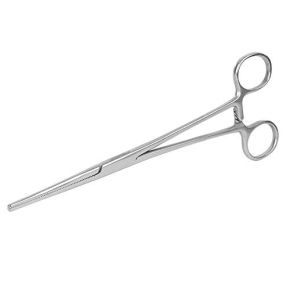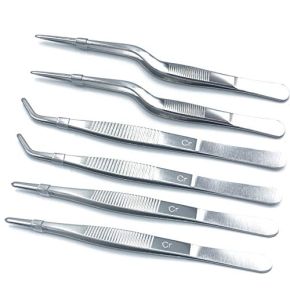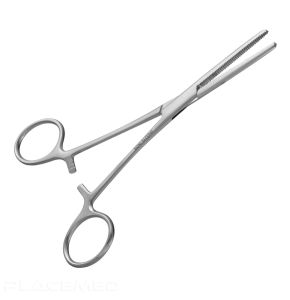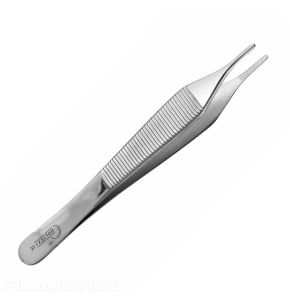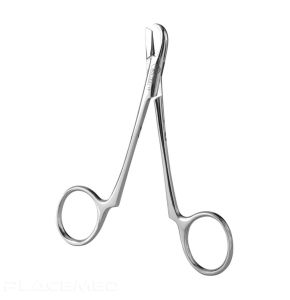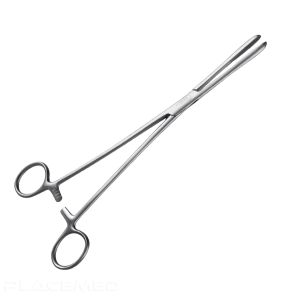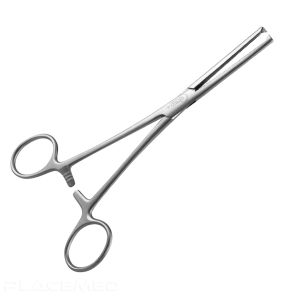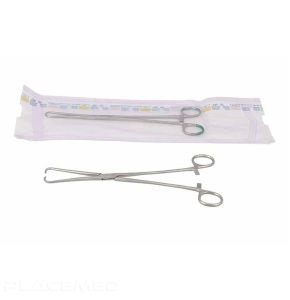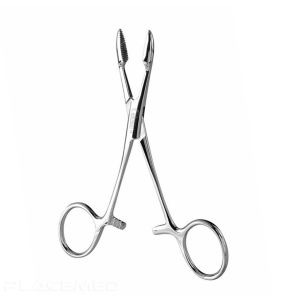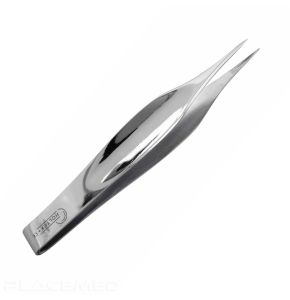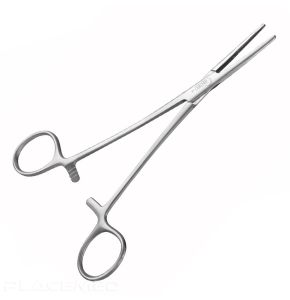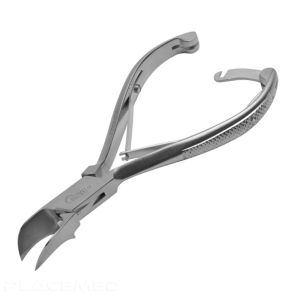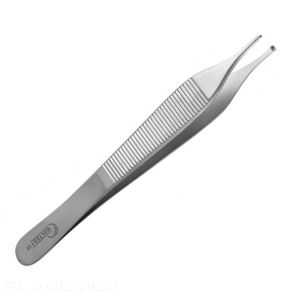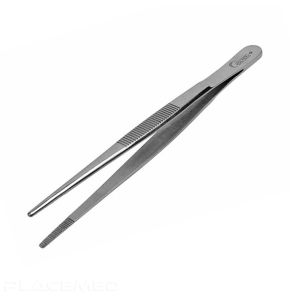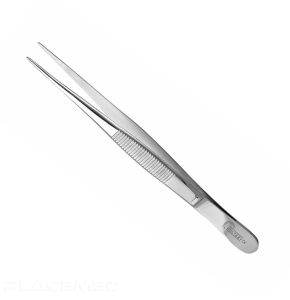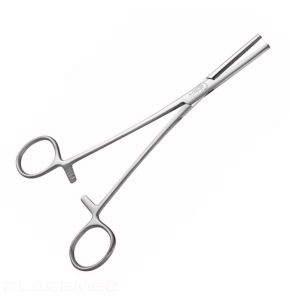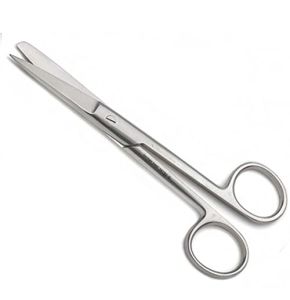Medical forceps
18/11/2024 443
18/11/2024 449
3661040021553 18/11/2024 505
3661040024981 18/11/2024 554
3661040023373 18/11/2024 543
3661040023755 18/11/2024 644
3661040021713 18/11/2024 560
3661040021386 18/11/2024 687
18/11/2024 552
3661040023625 18/11/2024 578
3661040025377 18/11/2024 595
3661040023021 18/11/2024 578
3661040021928 18/11/2024 495
3661040024967 18/11/2024 533
3661040023922 18/11/2024 590
3661040024110 18/11/2024 574
3661040023823 18/11/2024 589
18/11/2024 546
Professional Medical Forceps: Precision and Reliability!
The medical forceps are indispensable tools in the healthcare field. They are used to grasp, manipulate, or remove tissues and objects during various medical procedures. Understanding the different types of forceps and their specific uses is important to ensure safe and effective medical practice.
In this section dedicated to medical forceps, Placemed offers a wide variety of medical forceps. They are selected for their high quality, comfortable design, and perfect precision. Each instrument is the result of meticulous work, designed to facilitate your daily tasks. Whether you are a doctor, surgeon, nurse, or manager of a hospital or clinic, you will find here the appropriate forceps for each situation and specialty.
What are the different types of medical forceps and their specific uses?
There is a wide variety of medical forceps, each designed for specific uses. The main categories include:
- Kocher Forceps: This robust forceps is equipped with teeth at the end, allowing it to firmly grasp thick or slippery tissues. It is often used in general surgery to hold muscles or fascia without the risk of slipping. Its solid design ensures safe manipulation of tissues during delicate procedures.
- Anatomical Forceps: Designed to handle delicate tissues, this forceps has smooth jaws to avoid damaging fragile structures. It is commonly used in plastic surgery, ophthalmology, and microsurgery. Its precise design allows surgeons to work with great finesse.
- Hemostatic Forceps: Essential for controlling bleeding, these forceps clamp blood vessels to stop blood flow during surgical interventions. They are equipped with a locking mechanism that maintains pressure without continuous hand effort. They are found in almost all surgical specialties.
- Surgeon's Forceps: Used to hold needles during suturing, these forceps ensure precise and secure manipulation. Their inner surface is often serrated for better grip. They are indispensable in general surgery, dentistry, and dermatology.
- Dissecting Forceps: These fine and pointed forceps are used to separate tissues without cutting them. They facilitate access to deep and delicate areas, especially in neurosurgery and cardiovascular surgery. Their use requires great precision.
- Allis Forceps: Equipped with fine teeth, they are used to grasp soft tissues without damaging them. They are often used in gynecological surgery to hold uterine tissue. Their design allows a firm grip with minimal pressure.
- Magill Forceps: Specifically designed for intubation, they guide endotracheal tubes during anesthetic procedures. Their curved shape facilitates access to the airways. They are essential in anesthesiology and intensive care.
- Mosquito Forceps: A smaller version of the hemostatic forceps, used to clamp small blood vessels. They are ideal for pediatric procedures or fine interventions. Their reduced size offers great precision in confined spaces.
Each type of forceps is designed for a specific function, allowing healthcare professionals to perform procedures with precision and safety. Choosing the appropriate forceps is essential for the success of the intervention.
How to choose the appropriate medical forceps for a given procedure?
Choosing the right medical forceps depends on several key criteria. It is important to consider the nature of the procedure, the type of tissue to be handled, and the relevant medical specialty. Here are some elements to consider:
- Type of Tissue: Soft and delicate tissues require forceps with smooth jaws to avoid damage, while more robust tissues can be handled with toothed forceps.
- Medical Specialty: Each medical field has specific needs. For example, orthopedic surgery uses more robust forceps, whereas microsurgery requires extremely precise instruments.
- Function of the Forceps: Depending on whether you need to grasp, cut, dissect, or clamp, the type of forceps will vary. Identify the main function to choose the appropriate tool.
- Ergonomics: Well-designed forceps reduce hand fatigue and improve control. Consider the weight, size, and shape of the forceps for optimal comfort.
- Material: Stainless steel forceps are common for their durability, but other materials like titanium offer lightweight and corrosion resistance.
By carefully evaluating these criteria, professionals can select the most suitable instrument for the procedure, contributing to the success of the intervention and the safety of the patient.
What are the techniques for safely handling medical forceps?
Safe handling of medical forceps is essential to avoid injuries to patients and practitioners. Here are some key techniques to adopt:
- Correct Grip: Hold the forceps between the thumb and ring finger, with the index finger supporting along the length of the instrument for better control. This method reduces fatigue and improves precision.
- Appropriate Pressure: Apply sufficient pressure to grasp the tissue without excessively compressing it. Too much pressure can damage delicate tissues.
- Controlled Movements: Perform slow and deliberate movements. Avoid sudden gestures that could cause injuries or errors.
- Attentive Observation: Constantly monitor the operative site for any signs of problems. Using a magnifying glass or microscope can be beneficial for fine interventions.
- Continuous Training: Regularly participate in training to stay informed about best practices and new handling techniques.
By adopting these techniques, healthcare professionals can enhance the safety of procedures and reduce the risk of complications for patients.
How to ensure proper maintenance and sterilization of a medical forceps?
Proper maintenance of medical forceps is crucial to maintain their effectiveness and ensure patient safety. Here are the steps to follow for optimal maintenance:
- Initial Cleaning: Immediately after use, rinse the forceps with warm water to remove organic debris. Use a soft brush to clean hard-to-reach areas.
- Disinfection: Soak the forceps in an appropriate disinfectant solution to eliminate microorganisms. Adhere to the immersion time recommended by the disinfectant manufacturer.
- Sterilization: Use a suitable sterilization method, such as steam autoclaving, ethylene oxide sterilization, or dry heat sterilization. Ensure that the forceps are compatible with the chosen method.
- Drying and Storage: After sterilization, allow the forceps to dry completely to prevent corrosion. Store them in a clean and dry environment, preferably in sterile packaging.
- Regular Inspection: Check the integrity of the forceps before each use. Look for signs of wear, corrosion, or mechanical damage. Replace defective forceps immediately.
Rigorous maintenance prolongs the lifespan of medical forceps and ensures they function correctly, thereby reducing the risk of nosocomial infections.
What innovations exist in the design of medical forceps?
The field of medical forceps has seen numerous innovations aimed at improving functionality and ergonomics. Here are some of the recent advancements:
- New Materials: The use of titanium and advanced alloys makes forceps lighter and more resistant to corrosion. Composite materials also help reduce weight while maintaining necessary robustness.
- Improved Ergonomics: Handles are now designed to fit the shape of the hand, reducing muscle fatigue. Non-slip coatings provide a better grip, even with wet gloves.
- Integrated Technologies: Some forceps incorporate sensors to measure applied force, helping surgeons exert optimal pressure. Others include LED lighting systems to enhance visibility in poorly lit areas.
- Disposable Forceps: To reduce the risk of cross-infection, single-use forceps have been developed. They ensure perfect sterility without requiring complex sterilization procedures.
- Modular Design: Forceps with interchangeable components allow customization based on the procedure, offering great flexibility to practitioners.
These innovations contribute to improving the efficiency of surgical interventions and the comfort of healthcare professionals while increasing patient safety.
In conclusion, medical forceps are essential instruments that play a significant role in a multitude of medical procedures. A thorough understanding of the types of forceps, their uses, and handling techniques is indispensable for healthcare professionals. Technological advancements continue to enhance these tools, offering greater possibilities to optimize patient care. It is important to stay informed about the latest innovations and maintain rigorous maintenance practices to ensure the longevity and effectiveness of these vital instruments.
 Francais
Francais 
